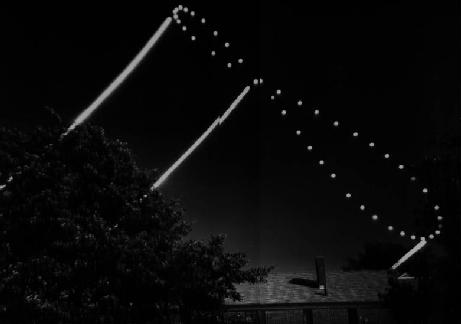
The Analemma
Ancient testimony
"Transporting obelisk to Rome by sea was a more difficult task by far. The ships attracted much interest. The late emperor Augustus dedicated the ship that carried the first obelisk and preserved it in a permanent dock at Puteoli to mark this marvelous feat. Cement caissons were installed on board at Puteoli. The vessel was then towed to Ostia and scuttled to help construct the port. Augustus used the obelisk in the Campus Martius in a remarkable way, namely to cast a shadow and thus mark the length of days and nights. A paved area was laid out to commensurate with the height of the monolith in such a way that the shadow at noon on the shortest day might extend to the end of the paving. As the shadow gradually grew shorter and longer again it was measured by bronze rods fixed in the paving. This device deserves study; it was the result of a brain wave Facundus Novius. Novius placed a gilded ball on the apex of the monolith otherwise the shadow cast would have been very indistinct. He got this idea, so it is said, from seeing the shadow cast by a man's head. These measurements, however, have not agreed with the calendar from some 30 years. Either the sun itself is out of phase or has been altered by some change in the behavior of the heavens, or the whole earth has moved slightly off center. I hear this phenomenon has been observed in other places."
But we must explain the principles of the shortening and lengthening of the day and separate them from these previously explained astronomical observations. For the sun at equinoctial time, turning through Aries (spring equinox) and Libra (autumn equinox), makes the gnomon cast a shadow 8-9ths of its own length at the latitude of Rome .
Overview of the monument --from top down. Note that the solarium had at least two construction phases the first under Augustus (12 BC), a second under Domitian (81-96) and then again in the mid second century that affected the surroundings (a water basin or "canopus" was added). The Domitianic remodel raised the level of the face of the solarium by at least 1.5 m. and probably reused significant amounts of the original material making it difficult to reconstruct the original with certainty.

The Analemma

This very unusual photograph was recorded by Dennis di Cicco on a single piece of film that was exposed on 45 different dates throughout an entire year in a permanently mounted camera (44 images were of the sun, with an additional exposure to include the house and tree). It shows the sun's position in the sky at the same time of day on each date. The figure-8 loop of sun images is well known to fanciers of sundials or old terrestrial globes - a graphic representation of the changing seasons and the equation of time.
To see how this figure-8 pattern originates, let's consider how the making of this picture has been affected by the annual apparent motion of the sun along the ecliptic. For simplicity, we'll suppose that all the exposures are made at exactly 8:30 am Eastern standard time.
For the moment, suppose that the sun's annual path around the sky is along the celestial equator instead, and that this motion is at a uniform rate. If that were true, than all 44 solar images in the picture would coincide. Actually, the ecliptic motion is tilted 23.5 degrees to the celestial equator, so that in late June the sun is 23.5 degrees north of the equator and in late December 23.5 degrees south of it. This annual north-south oscillation of the sun's declination angle is responsible for the lengthwise extension of the analemma pattern.
Because the ecliptic is tilted to the equator, the sun's motion relative to the stars is due east only in late June and late December. Hence the sun's eastward advance per day is greatest at those times, and least in March and September when the ecliptic crosses the equator slantingly. This means that when the sun is photographed at 8:30 am on different dates of the year, it generally is some minutes ahead of or behind clock time. The effect of this is to give an east-west spread to the pattern of solar images. We would get a photograph in which the two loops of the figure-8 were equal in size - provided that the sun's motion along the ecliptic were uniform (which would be the case if the earth's orbit were circular). Actually, the earth's orbit is somewhat elliptical, and the effect is to distort the figure-8 to the shape seen in the photograph.
Set the analemma curve upright, and it becomes a miniature almanac. The vertical coordinate of each point on it gives the sun's declination on a particular day of the year, while the horizontal coordinate tells how much the sun is ahead of or behind clock time on that day. (For further explanation of the analemma, see Bernard Oliver's article in Sky and Telescope for July, 1972, page 20.)